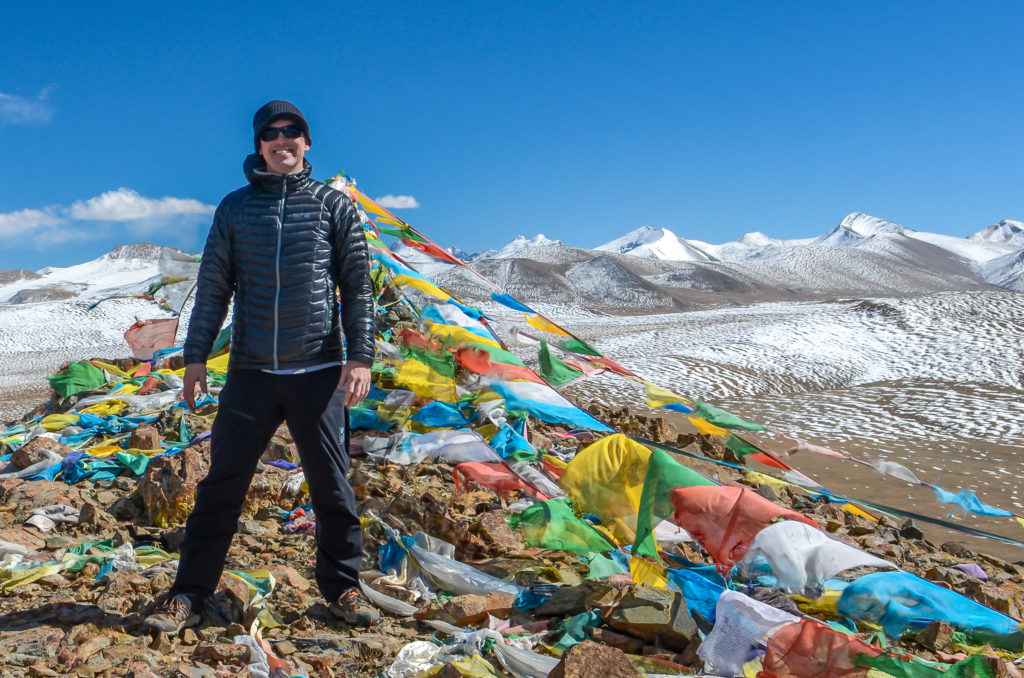
Tibet offers many amazing peaks thru the Himalaya Mountains. Here are some of the best treks in Tibet. For more info, contact us at: thelandofsnows@gmail.com
Contact us for FREE Tibet travel planning
We are the experts in Tibet travel! We have many decades of experience traveling, climbing and trekking in Tibet. Use us for free Tibet trip planning, including what agencies to use, what travel routes to take, when to go, How to get to Tibet and more! Contact us at: thelandofsnows@gmail.com.
For additional information on Tibet travel, connect with us on social media:
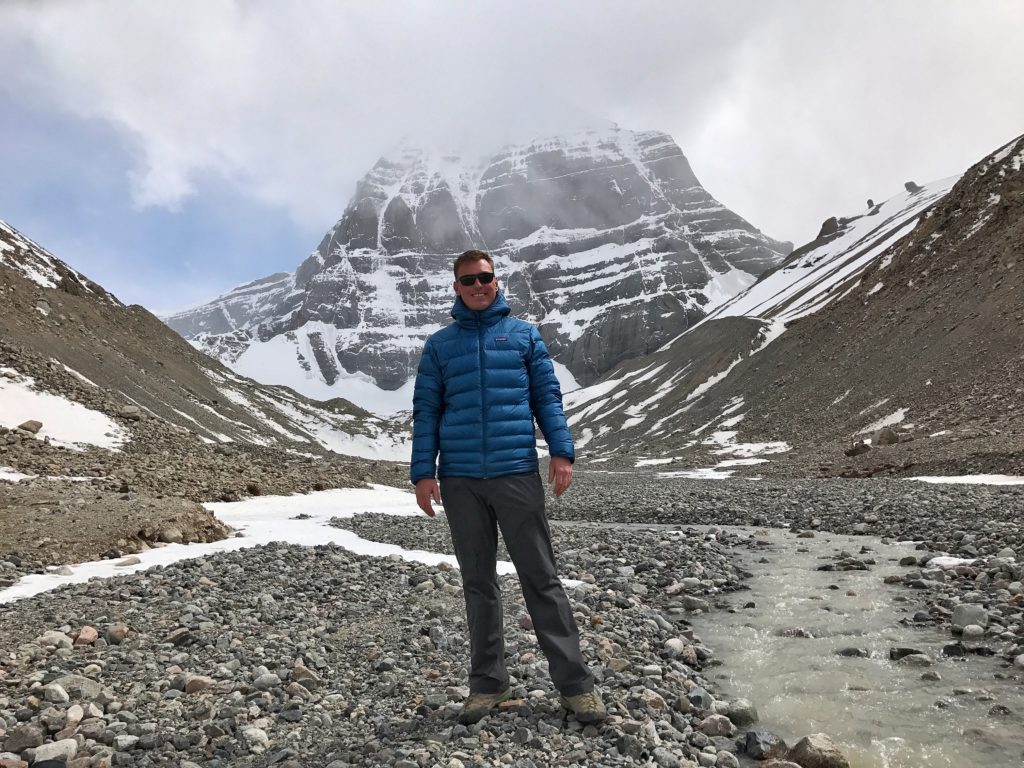
Lobsang, the author of The Land of Snows, on the Kailash Trek in western Tibet.
Trekking in Tibet
Tibet is a region of the Himalayas whose unique landscapes and mystical spiritualism has drawn explorers and travelers in from across the globe for several centuries. Referred to as being “the roof of the world” or “the land of snows”, Tibet has been awarded its name for good reason: The Tibetan Plateau stands between 4 and 5 kilometers above sea level and is surrounded by imposing mountain ranges that house several of the world’s largest peaks, including Everest, Lhotse (4th highest), Makalu (5th highest), Cho Oyu (6th highest) and Shishapangma (14th highest).
With craggy snow-capped peaks, mountainous terrain, glacial lakes and scenery that literally takes your breath away, it should go without saying that Tibet is home to some of the world’s best hiking trails. There is diversity in Tibet in terms of the routes that are available for trekking. Fortunately, you do not have to be an overly-experienced hiker with years of mountaineering experience in order to enjoy the rugged wilderness that Tibet has to offer. Most treks in Tibet can be done y anyone who is a good physical shape.
The beauty of trekking in Tibet is that the experience is as much of a cultural immersion as it is a physical challenge. Embarking on the trails here gives adventurers the chance to get out of the large cities and any traces of modern civilization, in order to mingle with the nomadic yak herders and the traditional villages that seemingly transport one back in time. Though there are plenty of options available to choose from, we have summarized some of the best treks in Tibet below for consideration. Compared to Nepal, most treks in Tibet are relatively short and range between 3 and 7 days in length. There are MANY other treks to choose from in Tibet. These are just what I think are the Best Treks in Tibet. Your list might be different than mine.
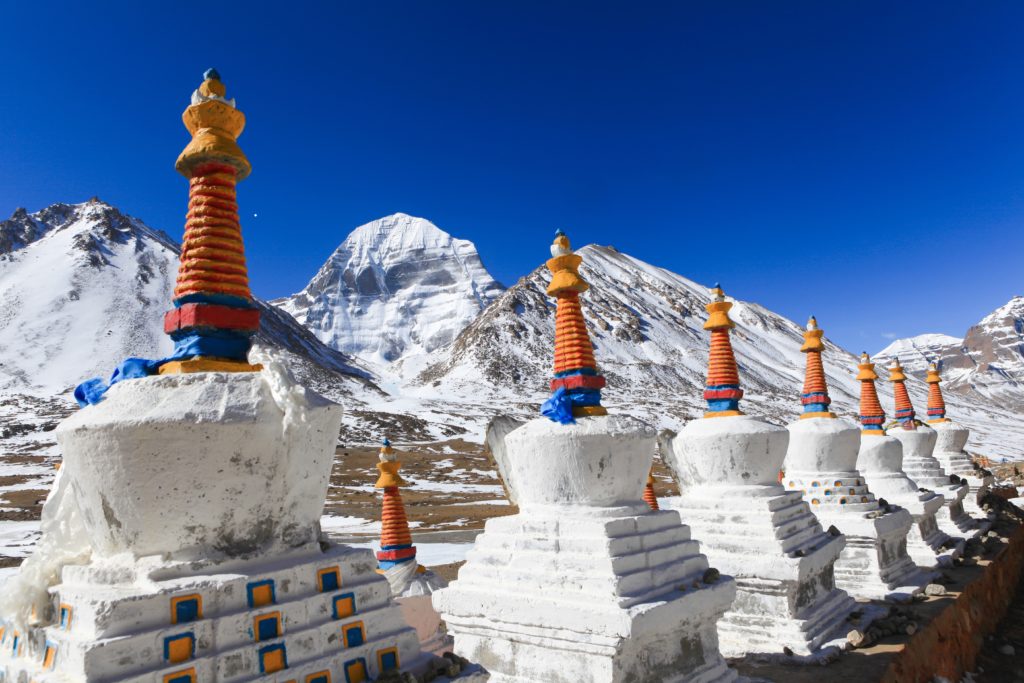
Stupas looking out to the north side of Mt Kailash
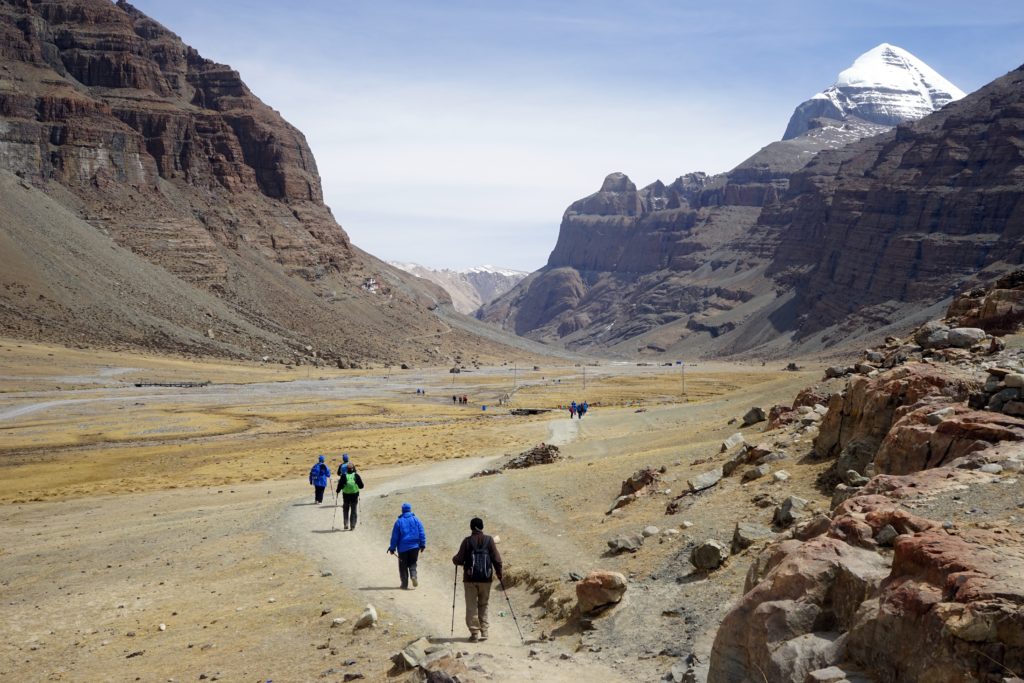
Trekkers on the first day of the Mt Kailash Trek in western Tibet
Trekking Regulations for Tibet
All foreign travelers going to Tibet must be on an organized journey thru a travel company. Travelers must have a private vehicle, a driver, travel permits, official travel itinerary and a guide with them. No independent travel or trekking is permitted. There are no exceptions to these regulations. None. Trekking in Tibet is easy to arrange as the travel company you use will take care of all arrangements inside Tibet for you. I recommend contacting a travel company at least 6 to 8 weeks before you plan to arrive to Tibet.
When to Trek in Tibet
The trekking season in Tibet is not as long as it is in nearby Nepal or Bhutan. For most treks, the season is from late April thru late October. This is because most treks in Tibet go to elevations above 5000 meters. During the long winters of Tibet, most treks can have extremely cold temperatures and could have passes blocked by snow. Due to the risk of severe weather, most travel companies will not arrange treks in Tibet past the end of October. My favorite months to trek in Tibet are May, June and October as these months are generally dry, have clearer skies allowing for good mountain views and have pleasant temperatures overall.
For info on a travel company to use in Tibet, contact us at: thelandofsnows@gmail.com
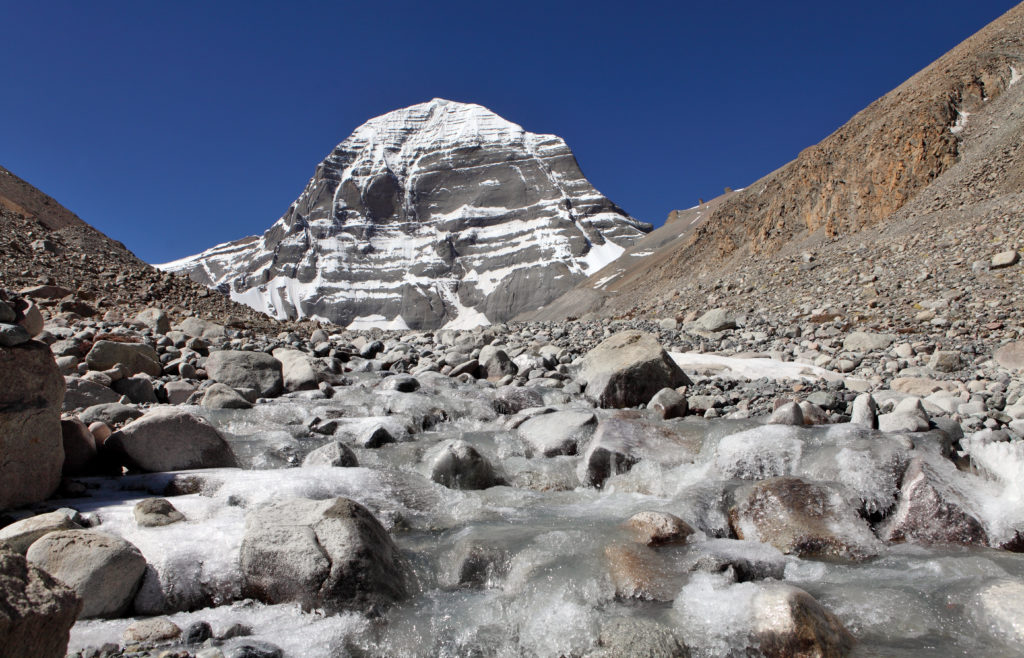
North side of Mt Kailash
Mt Kailash Trek
Join our small group, high quality Kailash Trek in May 2019. Details here: May 2019 Mt Kailash Trek
Towering above other nearby mountain peaks, Mount Kailash is the most sacred mountain in the Tibetan Himalayas. At 6,714m tall, it watches protectively over the western Tibetan Plateau, dwarfing the other mountains in the region and making them look like small hills. The mountain is of significance for more reasons than simply its height however; Kailash is of great importance to followers of Buddhist and Hindu faiths as it is considered to be the embodiment of holy Mount Meru.
Although ascending the peak itself is prohibited, the trail that encircles it (the “kora”) is one of the most scenic in all of Tibet. A combination of both the stunning nature and scenery that the trail leads adventurers through, and the many religious pilgrims that tread its length with you makes the Mt Kailash Trek a special experience, even if you do not consider yourself as a spiritual person.
For all of the trek’s beauty, it should be noted that it is also somewhat challenging. Trekking the Kailash route takes you over 52 kilometers (33 miles) of trail at altitudes that exceed 5600 meters (18,500 feet). Starting in the small Tibetan town of Darchen, the trail progresses through barren plains, moon-like valleys and alongside snow-capped mountain peaks. Trekkers generally take 3 days to complete the Mt Kailash Trek. There are basic accommodations, restaurants and shops along the route, so tent camping is not required.
The people that you meet along the way are every bit as inspiring as the scenery – from nomads wearing sheep-lined coats that have saved for years to make the trip, to devout Hindus from India or open-minded western adventurers.
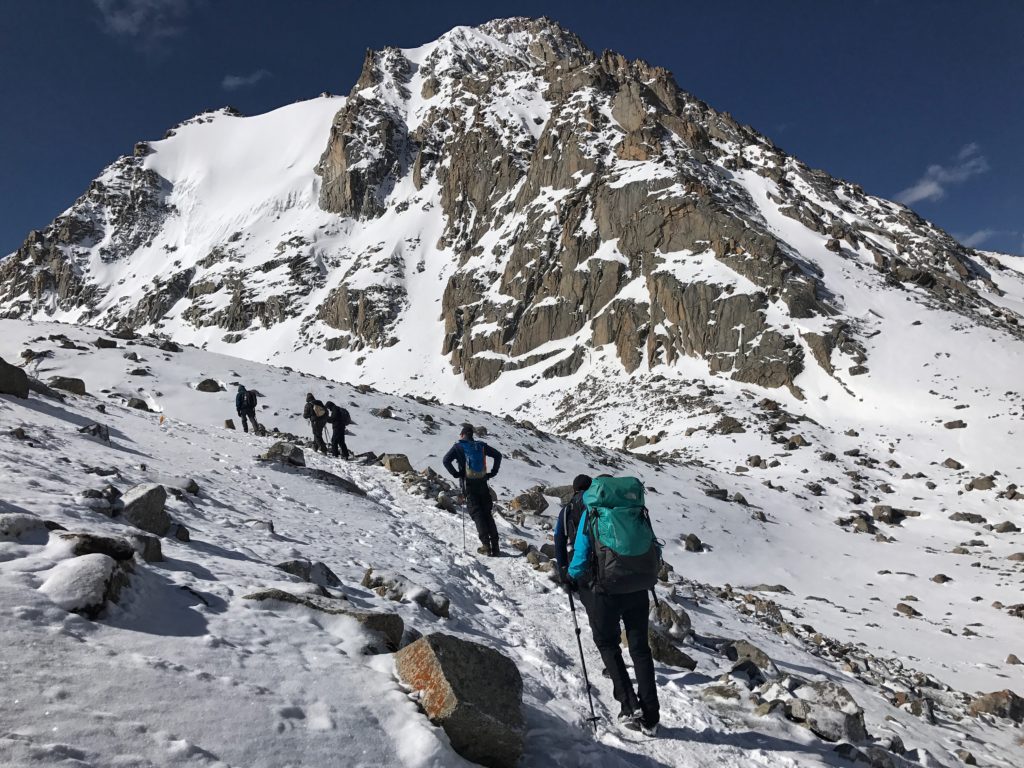
Going up to the top of the Dolma La Pass along the Mt Kailash Trek
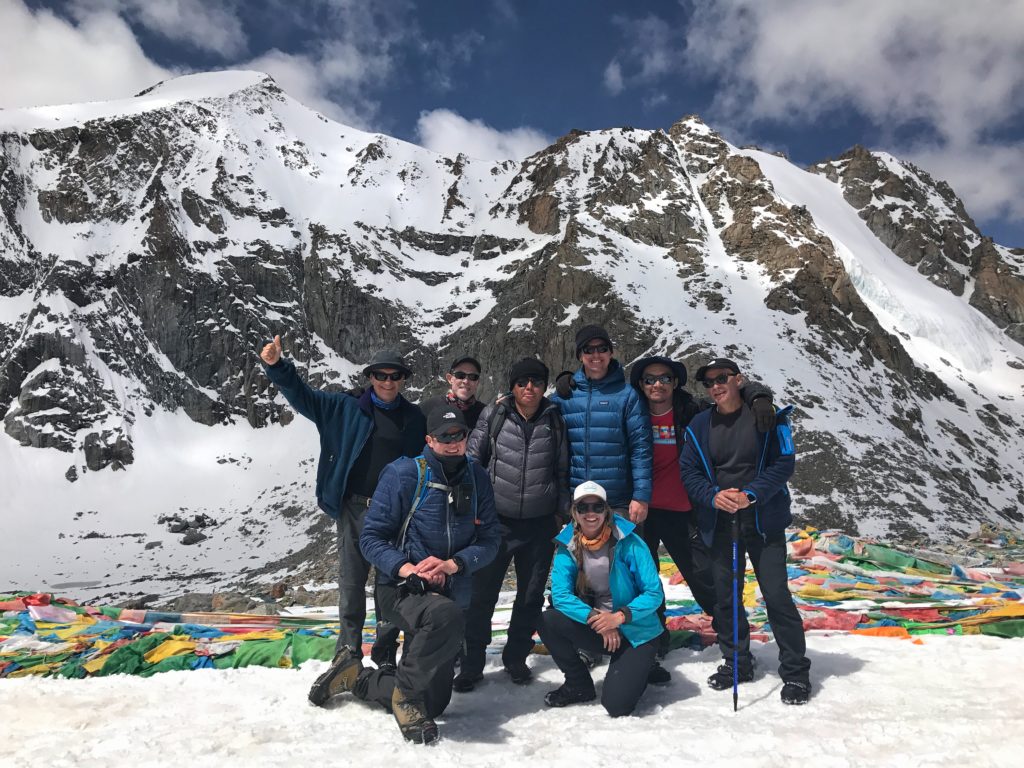
Trekkers at the top of the Dolma La Pass at Mt Kailash, elevation 5640m
Ganden to Samye Trek
For more info on the Ganden to Samye Trek, go to the following link: Ganden to Samye Trek
For a travel experience that provides a valuable insight into Tibetan religious beliefs, immerses you in the local culture, and leads you through the ruggedness of Tibet’s landscape, the Ganden to Samye Trek is a highlight of any Himalayan travel itinerary. The high passes of this route lead you through secluded valleys that are inhabited by nomadic herders and their yaks, past quaint local villages and connects 2 of Tibet’s most sacred Buddhist monasteries. It is easy to see why this is regarded as one of the best treks in Tibet.
From a religious perspective, this trek is of extreme importance since it connects two significant Buddhist sites in the region – Ganden, one of the main monastery of the Gelugpa sect, and Samye Monastery, which was the very first Buddhist monastery to be established in Tibet. Since the trail is considered as a “convenient” route for pilgrims to easily visit both of these sites, the route traditionally was frequented by locals on pilgrimage. Now modern roads take the lower-altitude valleys to reach these monasteries, but the old pilgrimage route through the mountains remains.
Starting just beyond Ganden Monastery, this trek goes for 80 kilometers (50 miles) through the mountain wilderness, not far from Lhasa. Most trekkers take 4 or 5 days to complete the trek, which goes over 2 mountain passes that exceed 5000 meters in elevation. During the summer months, nomad encampments can be found along the way, which are a great way to experience traditional Tibetan culture. There are no teahouses or restaurants along the trek, so you will need to be fully self-supported with food and camping gear. Good, reputable agencies in Tibet will provide this, along with pack-yaks and a cook, to assist you. The trek ends at Samye Monastery, 130 kilometers southeast of Lhasa.
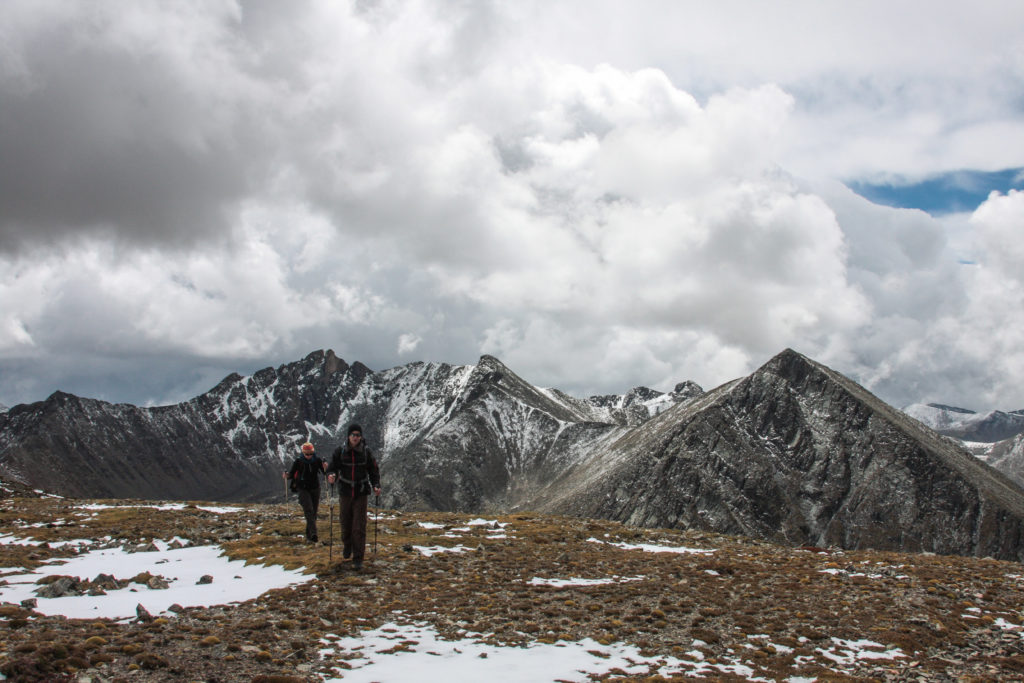
Along the trek from Ganden to Samye
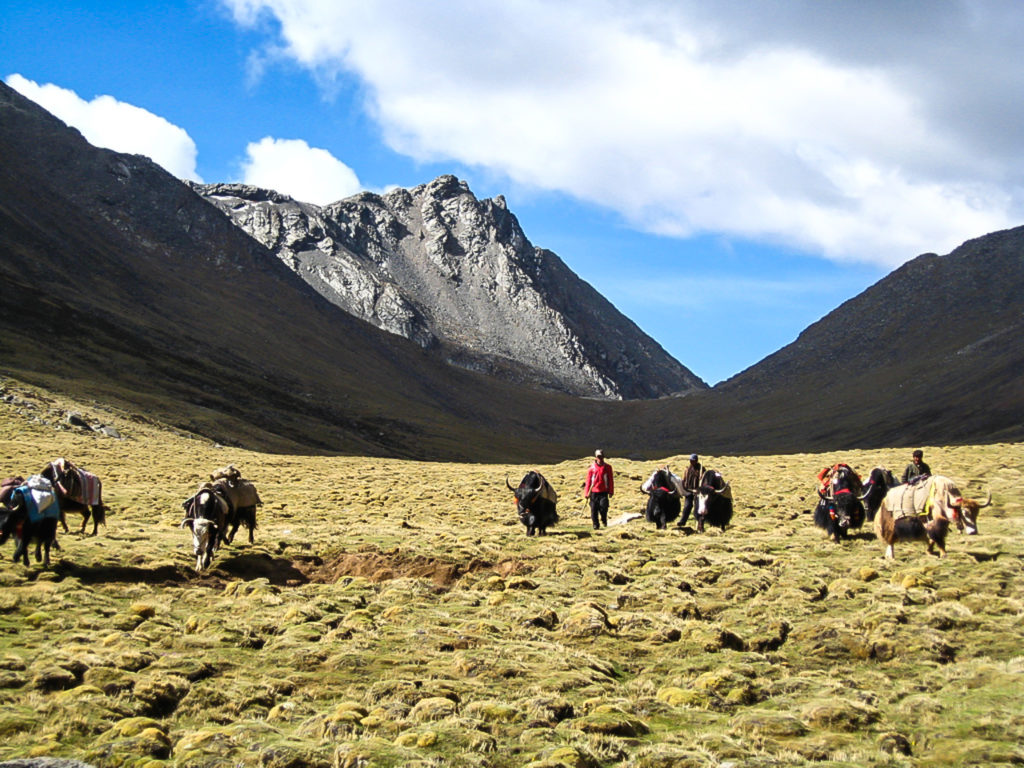
Pack yaks carrying tents and gear on the Ganden to Samye trek
Tsurphu to Yangpachen Trek
Undoubtedly one of the best short treks in Tibet, the Tsurphu to Yangpachen hiking trail is ruggedly scenic and culturally rewarding. This route typically has several Tibetan nomad communities along it, which will allow you to experience a rapidly disappearing aspect of Tibetan life. Being only 3 days long and covering around 45 kilometers (28 miles), this trek is somewhat more manageable than some of the other treks included in Tibet. This trek does reach a maximum altitude of 5400 meters at the Lasar La Pass, so proper altitude acclimatization is needed before setting out for this trek.
The trek commences at the Tsurphu Monastery, whose red-washed walls house over 370 monks. Along the banks of the Tsurphu river, this monastery is the head monastery of the Karma Kagyu Sect of Tibetan Buddhism and worthy of a day’s exploration in itself. In fact, I suggest staying a night here to help acclimatize. There is a very simple guesthouse near the monastery that also has a restaurant. If you are able to travel here in May, you will have the opportunity to observe a traditional festival here also as the Tibetan Saga Dawa festival (celebrating the birth, death and enlightenment of Buddha) is an annual occurrence.
From Tsurphu, elevation 4480 meters, you will cross wide plains, alpine tundra and high valleys, having the opportunity to soak away your trekking aches and pains at natural hot springs, the chance to stay near nomads who live in their black, yak wool tents, and an opportunity travel by foot along a trail that few others will be on. This is my top choice for a short trek that is not far from Lhasa.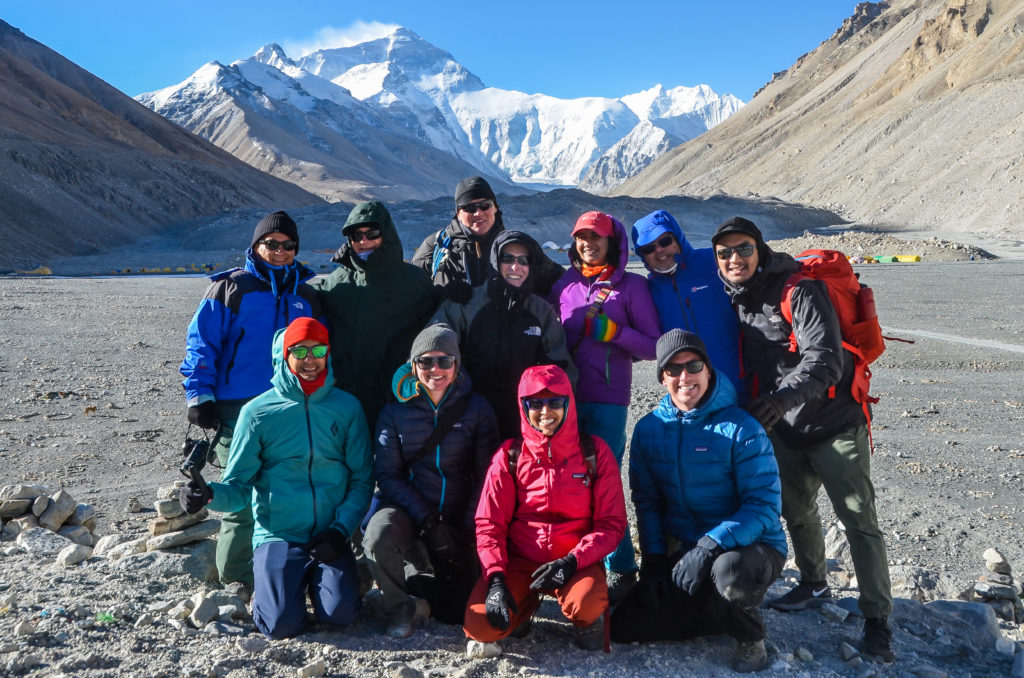
At the Tibet side Everest base camp
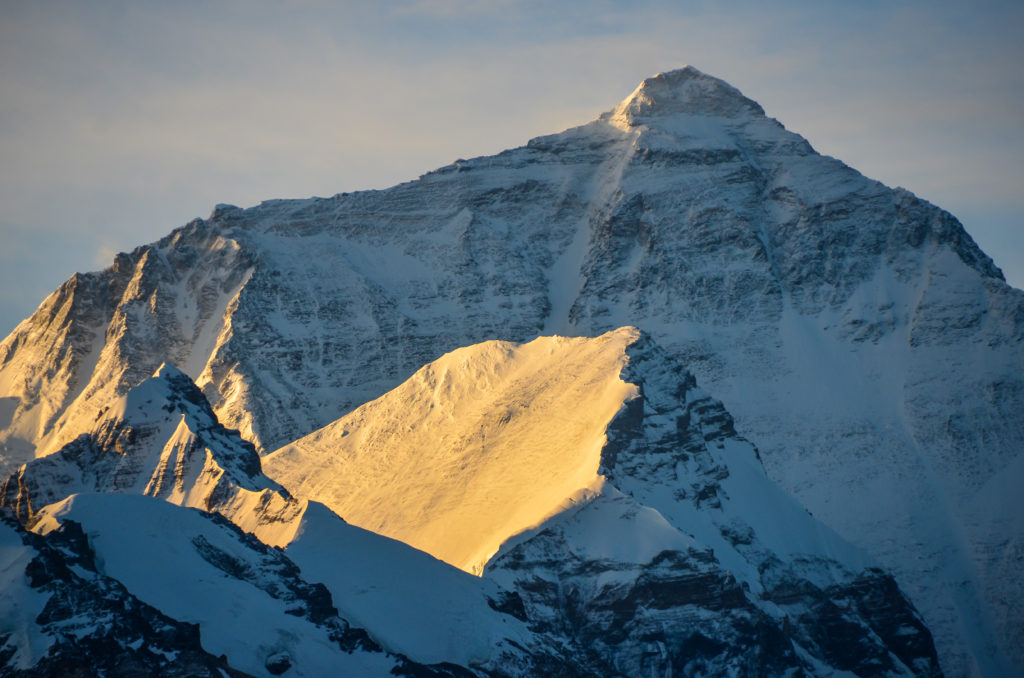
The sun rising on Everest’s North Face in Tibet
Tibet Everest Base Camp Trek
Though not as well-known as the trek to the Nepal side of the mountain, the Tibet Everest Base Camp Trek is a route reserved for only the most eager and avid hikers. Not only is the scenery incredible here, so too is the rewarding sense of accomplishment earned after completing the trek, and knowing that you have circumnavigated the route around the world’s highest mountain.
The Everest Base Camp Trek can be commenced from both Tibet and from Nepal. Each embarkation point offers a different view and route through this majestic scenery. From the Tibetan side, the Everest Base Camp Trek provides unparalleled views of Everest’s famous North Face. The view of Everest from the Tibet side is far superior to the view from the Nepal side base camp as the Tibet side offers an amazing, unobstructed view of the peak.
The starting point of this trek is the small truck-stop town of Old Tingri, located nearly 600 kilometers west of Lhasa. In clear weather, you can see Mt Everest, along with Cho Oyu (6th highest peak) from Old Tingri. Including acclimatization days in Lhasa, it will take 6 to 7 days to reach Old Tingri, elevation 4300 meters. I recommend staying at least 3 or 4 nights in Lhasa followed by a night in Gyantse and a night in Shigatse before going to Old Tingri. You can stay in Old Tingri for another night before starting the Everest Base Camp Trek.
From Old Tingri, the trek lead south towards the Himalaya Mountains. There are a couple of small, traditional villages along the way, but most of the 70 kilometers to Mt Everest goes thru a more wilderness-like area. There are good views of the mountains along the way, but the best views will be when you get near Rongphu Monastery. Once you reach the monastery, you will see the massive North Face of Mt Everest in clear view. Be advised that there is an old dirt road that goes thru some of the trek from Old Tingri to Everest base camp. This road is not popular, but there will be some vehicles on it each day that you will likely see. The trek from Old Tingri to Everest Base Camp takes 4 or 5 days to complete.
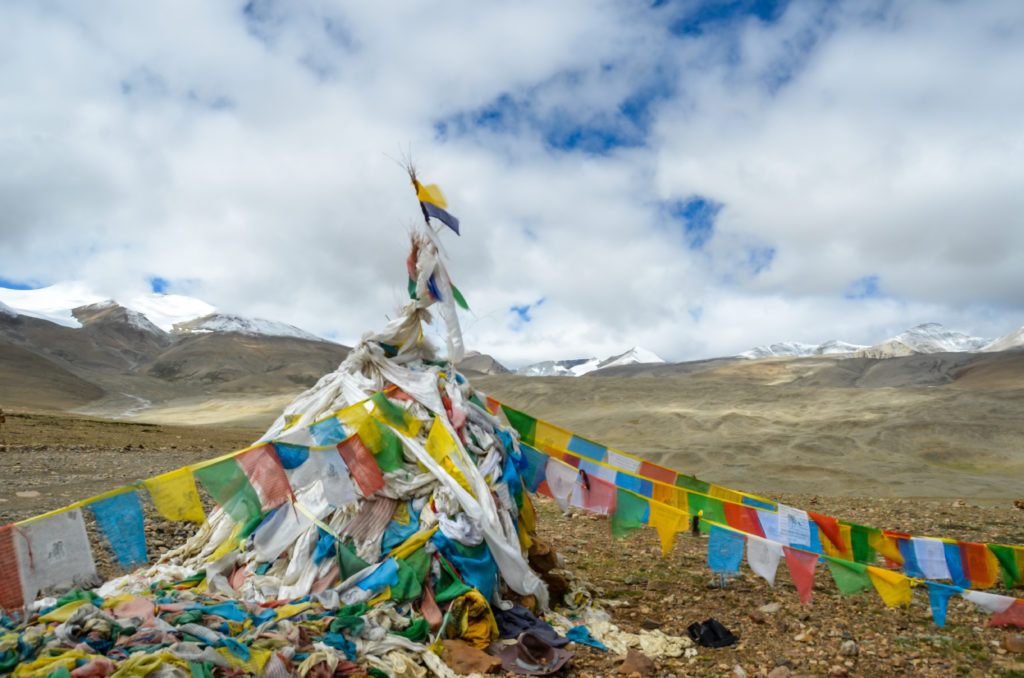
Snow-capped peaks and prayer flags along the Everest Base Camp Trek
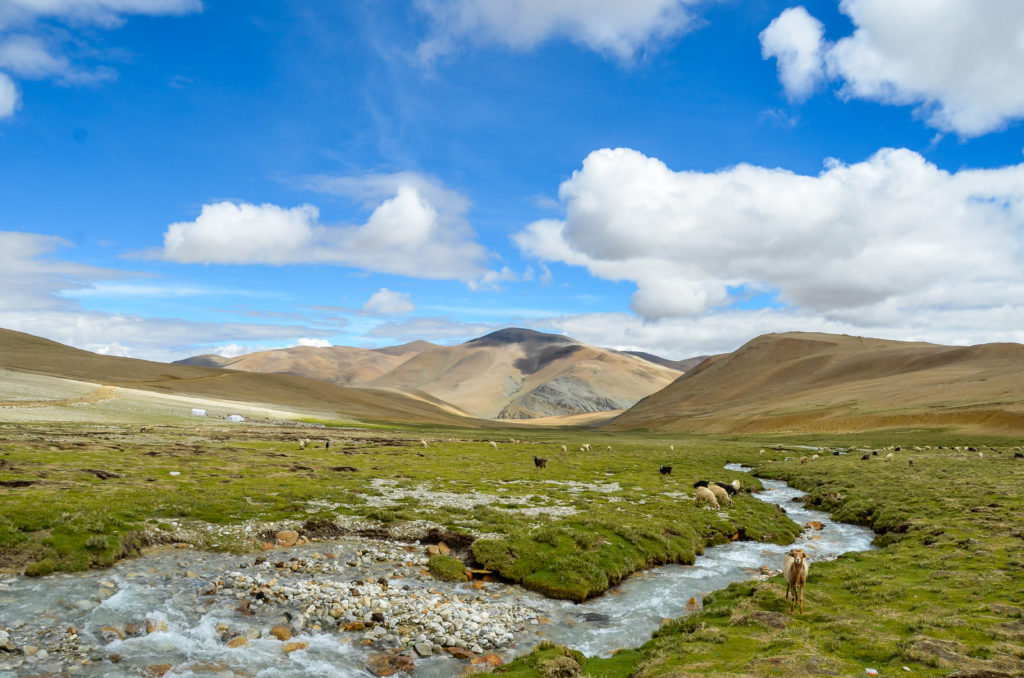
Blue skies and pristine creeks on the Everest base camp trek
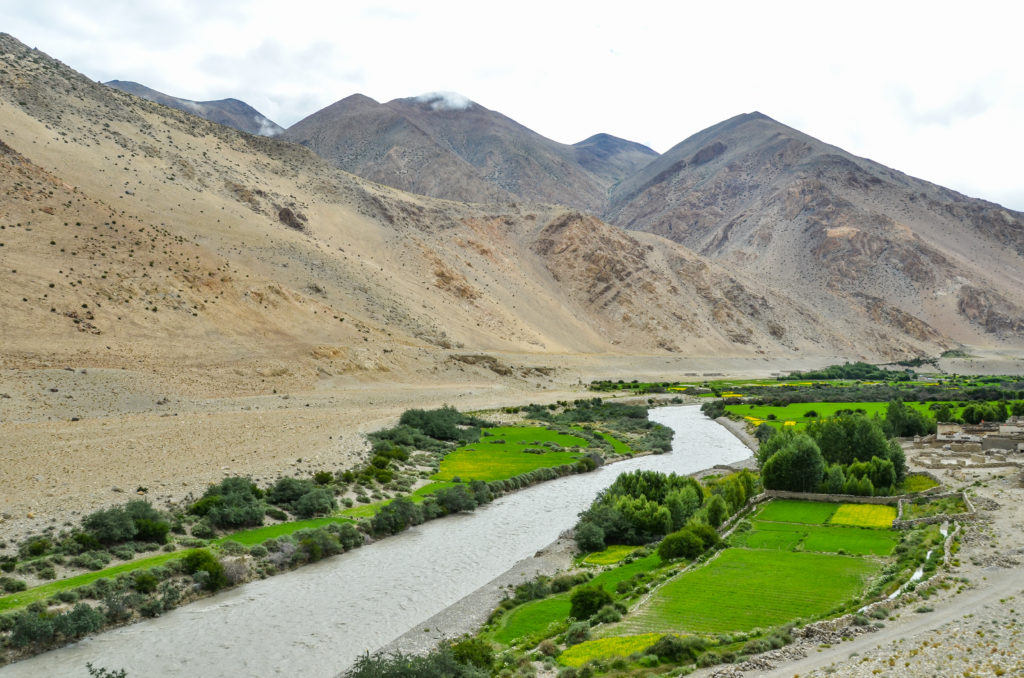
Farmlands along the river in the Kharta Valley in Tibet
Kharta Valley Trek
Trekking along icy glacial lakes, and beside steep-sided valleys is an experience worthy of a place on any avid hiker’s bucket list. The Tibet Kharta Valley Trek is the best immersion in rugged wilderness that one can experience in the Himalayas. This route provides quite a special experience, since only a few people trek this region each year. If you are a fan of getting “off the beaten track” when you travel, then this is as off the beaten track as you can get in Tibet!
Tibet’s Kharta Valley is an isolated region that lies near the Nepal border and is between Mount Everest in the west, Mount Makalu in the south, and the high Tibetan Plateau in the east and north. This is, by far, the most scenic trek in Tibet. However, as it is remote and quite far from Lhasa, this trek can be costly as you will need transportation to and from Lhasa, pack yaks, a cook and a trekking guide.
Though this trek is also in the Everest Region of Tibet, the Kharta Valley Trek is on the east side of the mountain and offers a completely different view compared to the Everest Base Camp Trek. Viewpoints along the route offer a clear outlook to the huge Kangshung glacier as well as many other glaciated peaks that rise above 6000 meters.
From Lingam La, the highest point on this trail (5,320m), you can see out to Mount Everest along with the peaks of Lhotse, Lhotse Shar and Makalu. During the spring months from late April thru early June, the picturesque Kangshung Valley is overgrown with fragrant wildflowers, adding an extra touch of magic to the experience. The Tibet Kharta Valley trek still leads adventurers through challenging terrain and very high altitudes, though it is slightly more moderate as compared to some Tibetan hiking trails. There are a couple of main routes to take in the Kharta Valley with most treks lasting between 6 and 8 days in length, not including time to reach the trailhead from Lhasa.
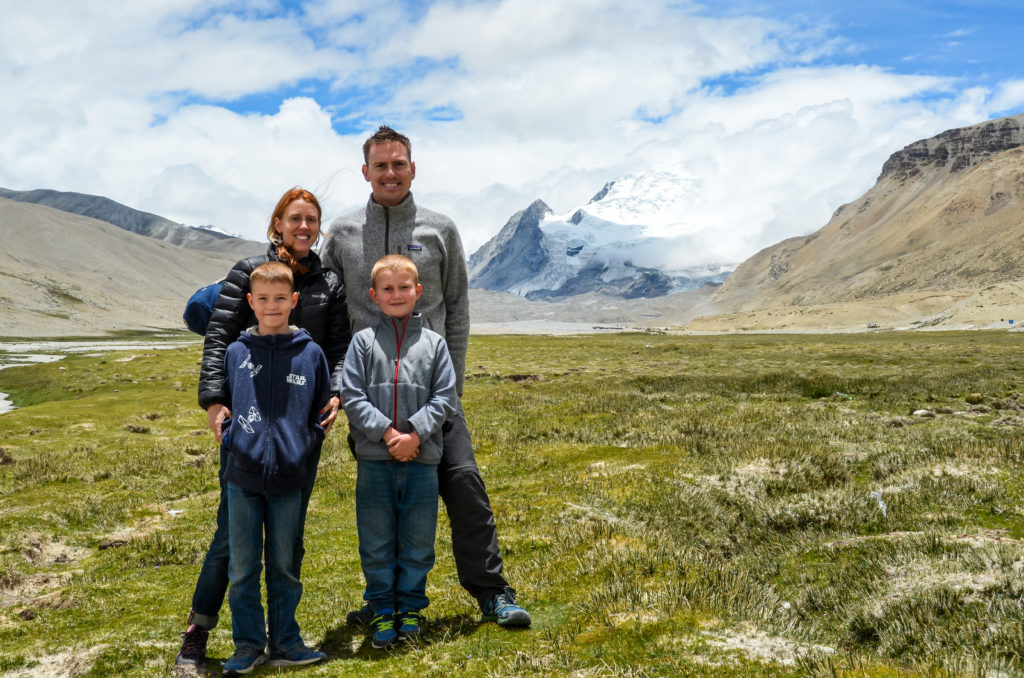
Summary of Best Treks in Tibet
Trekking in Tibet is a great way to explore The Land of Snows. All treks must be arranged through a travel company as no independent travel is permitted in Tibet. The best time of year to trek in Tibet is from late April thru late October. Most treks in Tibet are shorter lasting between 3 and 8 days long. Fore more information on the Best Treks in Tibet, contact us at: thelandofsnows@gmail.com
